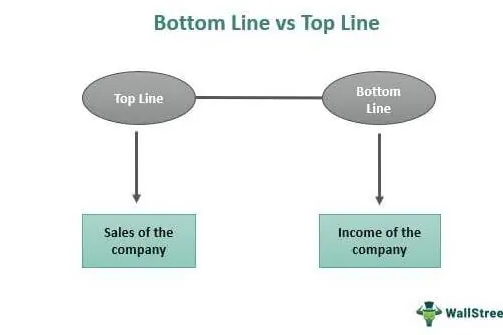Unlock the essential terms of stock trading: top line, bottom line, bid price, offer price, and volume. Learn their significance in making informed financial decisions.
Introduction
In the world of finance and stock trading, there are several key terms that investors and traders need to comprehend to make informed decisions. Two of the most critical financial metrics are top line and bottom line, while bid price, offer price, and volume are essential factors in stock trading. In this article, we will delve into the intricacies of these terms and their significance in the stock market.
Top Line and Bottom Line

- Top Line: The top line refers to a company’s revenue or sales. It represents the total income generated from the sale of goods or services before any expenses or deductions. In financial statements, you can find the top line at the very top, hence the name. Understanding a company’s top line is essential because it provides insight into the company’s ability to generate revenue. A growing top line is usually a positive sign, indicating increased sales and market demand.
- Bottom Line: The bottom line, on the other hand, represents a company’s net profit or earnings. It’s the amount of money a company has left after covering all its expenses, including operating costs, interest, taxes, and depreciation. The bottom line is a critical indicator of a company’s profitability. Investors often focus on the bottom line to assess the financial health and performance of a company. A growing bottom line suggests a company is effectively managing its costs and generating profits.
Check out the top line and bottom line for different companies at https://www.moneycontrol.com/
Bid Price and Offer Price

- Bid Price: In the stock market, the bid price is the highest price at which a buyer is willing to pay for a particular stock or security. It is the price you can expect to receive if you decide to sell your shares immediately. Understanding the bid price is crucial for traders as it helps them gauge market sentiment. A higher bid price generally indicates strong demand for the stock, while a lower bid price may signal weaker interest.
Bid Price (qty) for example, Bid Price (26) represents that no. of buy orders are 26.
- Offer Price: The offer price, also known as the ask price, is the lowest price at which a seller is willing to sell a stock or security. It represents the cost at which you can buy shares immediately. Like the bid price, the offer price provides valuable information about market dynamics. A lower offer price typically indicates a bearish sentiment, while a higher offer price suggests a bullish outlook.
Offer Price (qty) for example, Offer Price (40) represents that no. of sell orders are 40, It could be either 40 or in multiples of 40.
Volume

- Volume: Volume in stock trading refers to the total number of shares traded within a specific period, typically a day. It reflects the level of market activity and liquidity for a particular stock. High trading volume often indicates increased interest and can lead to greater price volatility. Analyzing volume is essential for traders to make informed decisions. Unusually high volume may suggest significant news or events impacting the stock, while low volume might indicate reduced interest.
For example, volume: 99224 means that 99224 are the no. of shares traded in a day.
Know, What are Indian stock market indicies?
Also know, What are Global indicies?
Conclusion
Understanding top line, bottom line, bid price, offer price, and volume is vital for anyone involved in the stock market. These metrics provide valuable insights into a company’s financial health and market sentiment, helping investors and traders make informed decisions. Monitoring these key factors can be the difference between success and failure in the dynamic world of finance and stock trading. So, whether you’re a seasoned investor or a newcomer to the stock market, keeping an eye on these metrics is essential for financial success.
FAQs
1. Why is the top line of a company’s financial statement so important?
The top line, representing a company’s revenue or sales, offers crucial insights into its ability to generate income. Discover why it’s a fundamental metric and how it influences investor perceptions.
2. How do bid price and offer price impact stock trading decisions?
Learn about the bid price and offer price, and understand how they reflect market sentiment. Discover how traders use these prices to assess demand and make informed trading choices.
3. Why is volume a key factor in stock trading, and how does it affect market dynamics?
Volume plays a significant role in stock trading, affecting market activity and price volatility. Find out why high or low trading volume matters and how it can signal important events in the stock market.